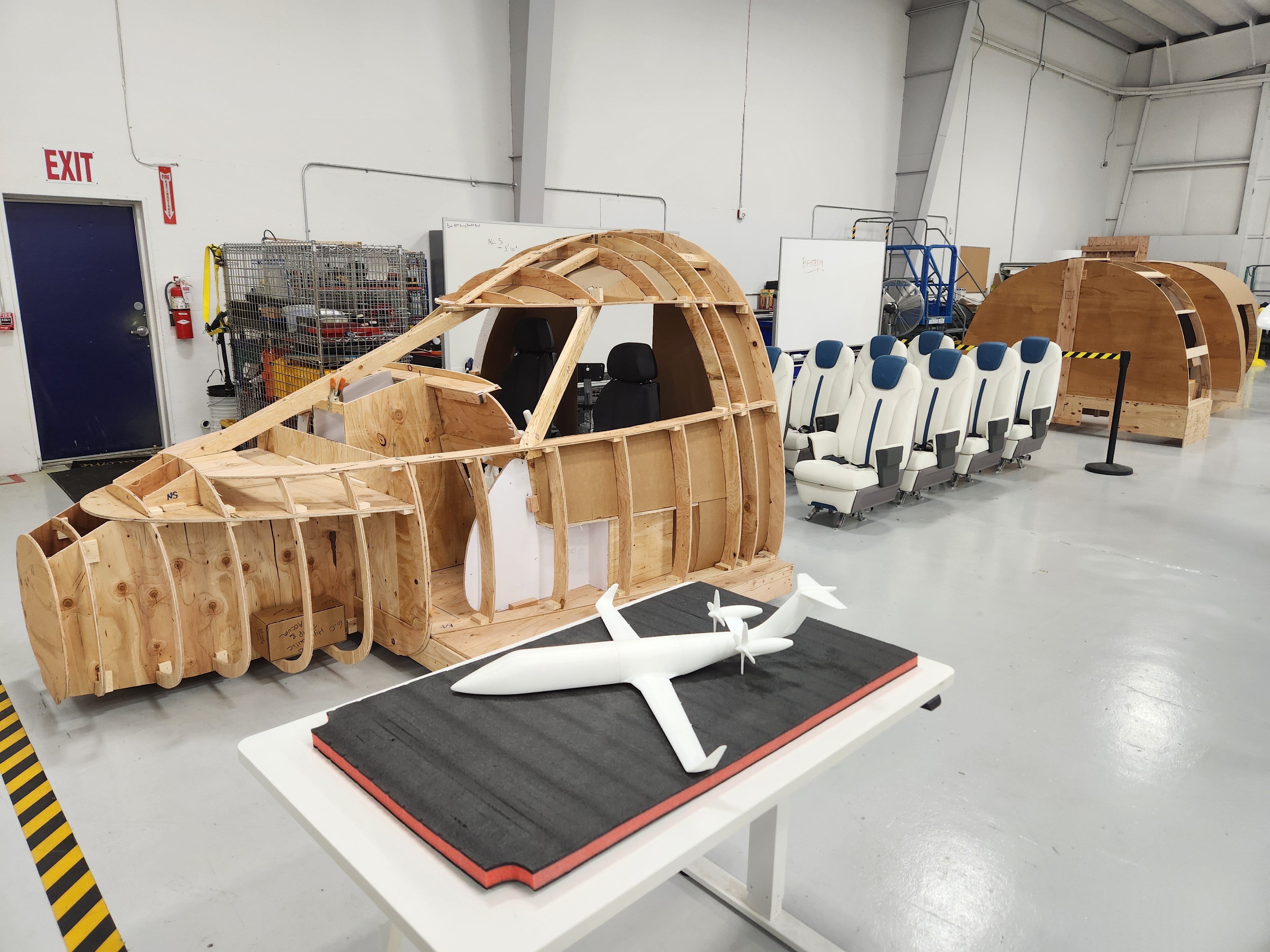Click Here to View This Page on Production Frontend
Click Here to Export Node Content
Click Here to View Printer-Friendly Version (Raw Backend)
Note: front-end display has links to styled print versions.
Content Node ID: 423492
Eviation continues to rake in orders for its all-electric Alice commuter airplane—despite the fact that the company hasn’t flown a prototype or rolled out a new aircraft in more than two years. Despite there being few signs of tangible progress since the historic first flight of the Alice, the U.S. company's CEO Andre Stein told AIN it remains on track to bring the nine-passenger Alice into commercial service by the end of the decade.
The full-scale Alice prototype, which Eviation once billed as the “production configuration,” made its historic first flight on Sept. 27, 2022, in Moses Lake, Washington. It was the highly anticipated launch of a flight test campaign that ended as soon as it began. As followers of the Alice eagerly awaited more flights, Eviation’s leadership was quietly mulling over design changes behind the scenes.
Inside Eviation’s headquarters at Arlington Municipal Airport in Washington, the flight-proven Alice prototype—which the company now refers to as a “proof of concept”—stands nobly in the middle of a large hangar, alongside the quarter-scale Orca technology demonstrator Eviation first flew in 2017. Although the original Alice will not be flying again, Eviation is still using it for some testing and development purposes as it refines the design of a new-and-improved Alice.
In August 2023, Eviation announced that Seattle-based contractor TLG Aerospace would design a new production configuration for the Alice. Stein took the helm of Eviation in January, having previously served as CEO of Eve Air Mobility during a 25-year tenure with Embraer. Eviation unveiled the updated Alice design in April this year. Since then, the company has been focused on selecting suppliers, and it has not yet begun assembling the new Alice.

On the shop floor behind the venerable aircraft, Eviation’s engineers have built a full-scale representation of the aircraft’s interior sections with wood. They are using this skeleton to plan the exact positioning of various components that will need to fit inside, like the batteries and the avionics bay. Fitting all those parts inside the aircraft is somewhat like playing a game of Tetris, but the engineers must also ensure that they leave enough room for humans to access all those parts for assembly and maintenance, which can be a bit of a squeeze, Stein explained.
Speaking with AIN at Eviation’s headquarters last week, Stein declined to comment on the status of the supplier selection process, but he said his team is actively engaged with “the big ones that are further down the line.”
Eviation already had a full cadre of suppliers for the previous version of the Alice, but the company started from scratch in selecting suppliers for the updated design. Stein said none of Eviation’s existing suppliers were guaranteed selection for the updated Alice—not even MagniX, which provided the two Magni650 electric propulsion units that powered the Alice. Eviation and MagniX, both based in Washington state, are sister companies under the Clermont Group, which has provided continuous funding for the Alice program.
Eviation ‘Comfortable’ With Cash Flow
According to Stein, Eviation remains “very comfortable” with its current financial situation, and he isn’t worried about the company running out of cash. In addition to firm backing from the Singapore-based Clermont Group, Eviation has been collecting pre-delivery payments from customers. While the company is not actively fundraising, it is looking into partnerships with other players in the regional air mobility market, Stein said.
Eviation also expects to reap the benefits of state incentives and grants after choosing a location for the Alice factory. Its pilot production facility is in Washington, but the final assembly line isn’t necessarily staying in the state. Eviation is assessing several potential locations, and the local incentives will weigh heavily on the decision.
Exactly when Eviation plans to build that factory and launch production remains to be determined. In fact, the entire timeline for Eviation’s path to certification and commercialization is a bit of a mystery, because the company has deliberately chosen to keep those targets internal. It is sharing that information exclusively with customers, but not the public.
“At this stage, we are not disclosing dates. It’s very intentional,” Stein said. “It’s very good practice to make sure we are delivering on our promise when we make one.” (When Eviation first unveiled the Alice in 2019, the company publicly claimed it would have the aircraft certified and in service around 2021.)
Eviation’s order book includes 600 aircraft worth a potential $5 billion, Stein said. However, Eviation hasn’t quite figured out the exact price tag it will put on the Alice because that number depends on as-yet-determined supplier selections, he explained.
Most recently, Miami-based UrbanLink Air Mobility placed an order on October 2 for 10 Alice commuter airplanes with options for 10 more. It intends to use the Alice to ferry passengers between South Florida and Puerto Rico. Other customers include airlines and lessors in Europe, Korea, and New Zealand. Its launch customer Cape Air plans to use the Alice for scheduled services connecting Boston and the Massachusetts communities of Martha’s Vineyard and Nantucket.
In addition to the nine-seat commuter airplane, Eviation is offering a cargo-carrying variant with a 2,500-pound payload capacity. Both versions are projected to have a range of about 250 nm with the battery technology available today. Eviation isn’t counting on better batteries to become available before the Alice enters service, but it is “future-proofing” the aircraft’s design to accommodate different power supplies that could become available. In the future, the Alice could potentially be modified to support hybrid-electric or hydrogen fuel cell powertrains, Stein said.